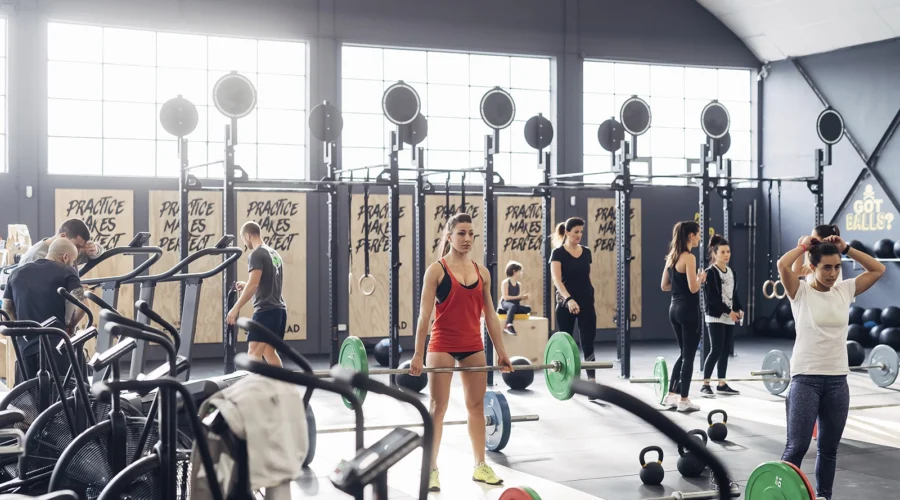Exploring Different Types of Gyms and Training Spaces
Choosing the right gym or training space can be a determining factor on how you get on with your fitness journey. With a variety of options available, it’s important to find a place that suits your preferences, goals, and lifestyle. In this blog, we’ll explore the different types of gyms and training spaces, highlighting their unique features, benefits, and potential drawbacks.
Open Gyms
Open gyms, or commercial gyms, are the most common type of fitness facility, typically offering a wide range of equipment and amenities. These gyms cater to a broad audience and provide a variety of exercise options.
Features:
Extensive selection of cardio machines (treadmills, ellipticals, stationary bikes)
Wide array of strength training equipment (free weights, machines, resistance bands)
Group fitness classes (yoga, spinning, HIIT)
Amenities such as locker rooms, showers, and sometimes saunas and swimming pools
Benefits:
Variety: Access to diverse equipment and classes helps keep workouts interesting.
Convenience: Many locations operate 24/7, making it easy to fit workouts into your schedule.
Social Environment: Opportunity to meet like-minded individuals and join fitness communities.
Drawbacks:
Crowds: Peak hours can lead to crowded spaces and wait times for equipment.
Cost: Membership fees can be expensive, especially if you opt for premium services.
Boutique Fitness Studios
Boutique fitness studios specialise in specific types of workouts, offering a more personalised and focused experience. These studios often create a community atmosphere and provide expert instruction.
Features:
- Specialisation in one or a few types of exercise (yoga, Pilates, HIIT, spin)
- Smaller class sizes for more individual attention
- High-quality, often niche equipment tailored to the specific workout
Benefits:
Expert Instruction: Trainers are typically specialised and highly skilled in their specific discipline.
Community Feel: Smaller classes create a sense of community.
Targeted Workouts: Ideal for those looking to focus on a specific type of training.
Drawbacks:
Cost: Higher per-class fees compared to commercial gyms.
Limited Variety: Specialisation means fewer options for different types of workouts.
Functional Fitness Gyms
Functional fitness gyms, such as CrossFit or Hyrox affiliated gyms, are usually dedicated spaces for CrossFit and Hyrox training – high-intensity workouts that combines elements of cardio, weightlifting, and gymnastics.
Features:
- Functional fitness equipment (kettlebells, barbells, rowing machines, ropes)
- Group classes with a focus on high-intensity interval training (HIIT)
- Emphasis on community and support
Benefits:
Intense Workouts: Effective for building strength, endurance, and overall fitness.
Community: Strong sense of camaraderie and support among members.
Coaching: Classes led by certified coaches who provide guidance and motivation.
Drawbacks:
Intensity: Workouts can be demanding, which may not suit everyone, especially beginners.
Cost: Membership fees can be higher than those for commercial gyms.
Specialty Gyms
Specialty gyms cater to specific sports or activities, such as boxing, martial arts, rock climbing, or dance.
Features:
- Specialised equipment and facilities (boxing rings, climbing walls, dance studios)
- Professional instructors with expertise in the specific activity
- Community of enthusiasts with similar interests
Benefits:
Focused Training: Ideal for those dedicated to a specific sport or activity.
Expert Guidance: Access to specialised training and coaching.
Engaging and Fun: Workouts that align with personal interests and passions.
Drawbacks:
Limited Focus: May not provide a comprehensive fitness regimen.
Cost: Specialised training can be more expensive.
Limited Access Gyms
Limited access gyms, such as women or elderly only gyms, are designed to provide a comfortable and supportive environment exclusively for certain demographics. These gyms cater to a demographic’s unique fitness needs and preferences.
Features:
- Equipment tailored to a demographic’s fitness goals (e.g., lighter weights, machines targeting common areas of interest)
- Group fitness classes designed for specific demographics (e.g., women’s boot camp, prenatal yoga)
- Supportive and inclusive environment
Benefits:
Comfort: Many people from certain demographics feel more at ease working out in a protected environment.
Community: Opportunities to connect with other people within your demographic with similar fitness goals.
Specialised Programs: Classes and training tailored to a demographic’s health and fitness goals.
Drawbacks:
Limited Audience: Exclusivity can limit social diversity.
Cost: Membership fees can be similar to or higher than commercial gyms.
Positive Attitude and Energy
A personal trainer’s attitude can significantly influence your workout experience. A 6AM gym session or rocking up after 10 hours of work is never the easiest task, and won’t be improved if you are paying a personal trainer who is an energy sapper rather than an energy giver. Look for a positive, energetic trainer that you look forward to the sessions with, that can make even the toughest workouts enjoyable and drive you to push through your limits.
Conclusion
Choosing the right gym or training space depends on your personal preferences, fitness goals, and lifetyle. By understanding the unique features and benefits of each type of gym, you can make an informed decision that best supports your fitness journey.
Find your new training space here.



